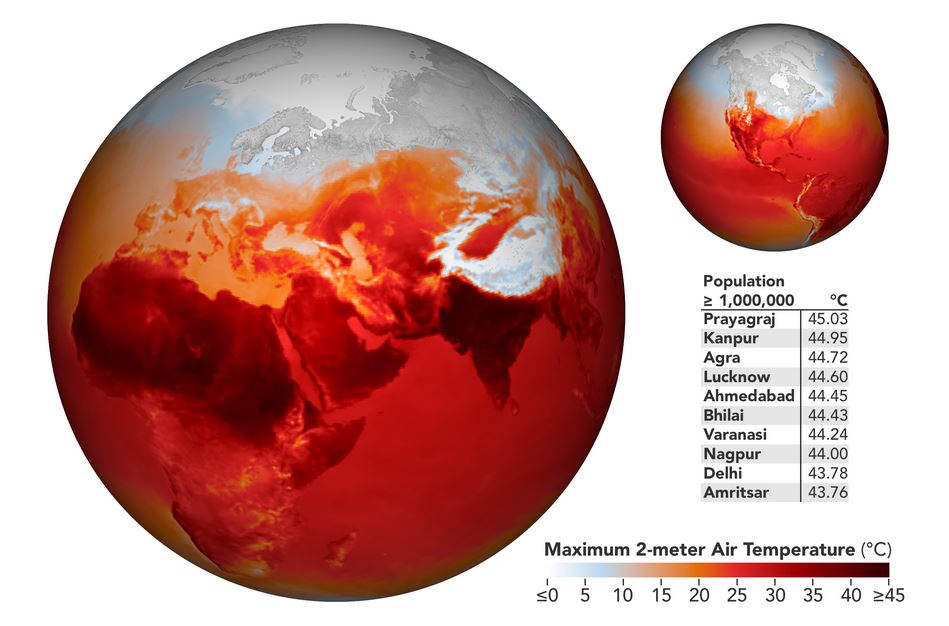CONTENTS
- Rules for resignation and reinstatement of an IAS officer
- China’s Global Security Initiative
- Heat Wave
- Atal New India Challenge 2.0
Rules for Resignation and Reinstatement of an IAS officer
Context:
A distinguished Indian Administrative Service (IAS) officer and 2010 UPSC CSE topper has been reinstated after resigning in protest of the “unabated” killings in Kashmir in 2019.
Relevance:
GS II- Civil Service
Dimensions of the Article:
- What rules apply when an IAS officer chooses to resign?
- To whom must the resignation of an IAS officer be submitted?
- What happens after the resignation is submitted?
- Under what circumstances is a resignation accepted or rejected?
- Is an officer allowed to withdraw a resignation that has already been submitted?
What rules apply when an IAS officer chooses to resign?
- A resignation is a formal intimation in writing by an officer of his/her intention or a proposal to leave the IAS, either immediately or at a specified date in the future.
- Guidelines of the Department of Personnel, the cadre controlling department for the IAS, say that a resignation has to be clear and unconditional.
- The resignation of an officer of any of the three All-India Services — IAS, the IPS and IFoS — is governed by Rules 5(1) and 5(1)(A) of the All India Services (Death-cum-Retirement Benefits) Rules, 1958.
- There are similar rules for resignation of officers belonging to the other central services as well.
- Resignation from service is entirely different from accepting the government’s Voluntary Retirement Scheme (VRS).
To whom must the resignation of an IAS officer be submitted?
- An officer serving in a cadre (state) must submit his/her resignation to the chief secretary of the state.
- An officer who is on central deputation is required to submit his/her resignation to the secretary of the concerned Ministry or Department.
- The Ministry/Department then forwards the officer’s resignation to the concerned state cadre, along with its comments or recommendations.
Click Here to Read More :Rules for Resignation and Reinstatement of an IAS officer
China’s Global Security Initiative
Context:
Recently, a new Global Security Initiative (GSI) was put forward by Chinese President. However, China did not provide much clarity or details about the proposed global security initiative.
Relevance:
GS II- International Relations
Dimensions of the Article:
- What is Global Security Initiative?
- Key propositions made by China’s President
- Reactions of Quad Members
What is Global Security Initiative?
The programme, which was conceived as a global public benefit, aims to enhance international peace and stability by promoting equity and justice among nations.
Chinas President defined his proposal in six areas:
- Stay committed to the vision of common, comprehensive, cooperative and sustainable security, and work together to maintain world peace and security;
- Stay committed to respecting the sovereignty and territorial integrity of all countries, uphold non-interference in internal affairs, and respect the independent choices of development paths and social systems made by people in different countries;
- Stay committed to abiding by the purposes and principles of the UN Charter, reject the Cold War mentality, oppose unilateralism, and say no to group politics and bloc confrontation;
- Stay committed to taking the legitimate security concerns of all countries seriously, uphold the principle of indivisible security, build a balanced, effective and sustainable security architecture, and oppose the pursuit of one’s own security at the cost of others’ security;
- Stay committed to peacefully resolving differences and disputes between countries through dialogue and consultation, support all efforts conducive to the peaceful settlement of crises, reject double standards, and oppose the wanton use of unilateral sanctions and long-arm jurisdiction;
- Stay committed to maintaining security in both traditional and non-traditional domains, and work together on regional disputes and global challenges such as terrorism, climate change, cybersecurity, and biosecurity.
Click Here to read more : China’s Global Security Initiative
Heat Wave
Context:
India is gripped in the wrath of a long spell of heatwaves that too in the early month of April.

Relevance:
GS III- Environment (Climate change)
Dimensions of the Article:
- About Heat Wave
- Criteria for Heat Waves
- Health Impacts
About Heat Wave
- A heat wave is a period of abnormally high temperatures, more than the normal maximum temperature that occurs during the summer season in the North-Western and South Central parts of India.
- Heat waves typically occur between March and June, and in some rare cases even extend till July.
- Higher daily peak temperatures and longer, more intense heat waves are becoming increasingly frequent globally due to climate change.
Click Here To Read More: Heat Wave
Atal New India Challenge 2.0
Context:
Recently, Atal Innovation Mission launched the phase 1 of the 2nd edition of the Atal New India Challenge (ANIC 2.0).
Relevance:
GS II- Polity and Governance (Government Policies and Interventions
Dimensions of the Article:
- About Atal New India Challenge
- About Atal Innovation Mission
About Atal New India Challenge:
- Atal New India Challenge is a flagship program of Atal Innovation Mission, NITI Aayog.
- The program aims to seek, select, support and nurture technology-based innovations that solve sectoral challenges of national importance and societal relevance.
- One of the primary goals of the ANIC program is to support innovations in areas critical to India’s development and growth – Education, Health, Water and Sanitation, Agriculture, Food Processing, Housing, Energy, Mobility, Space Application etc.
- The Atal New India Challenge aims to address the Commercialization Valley of Death – supporting innovators scale over the risks associated with access to resources for testing, piloting and market creation.
- ANIC solicits innovations from start-ups and MSMEs in the prototype stage and after a competitive process of selection supports them through to the commercialization stage over a course of 12 – 18 months with a funding of up to INR 1 crore along with other associated support from the AIM’s innovation ecosystem.





